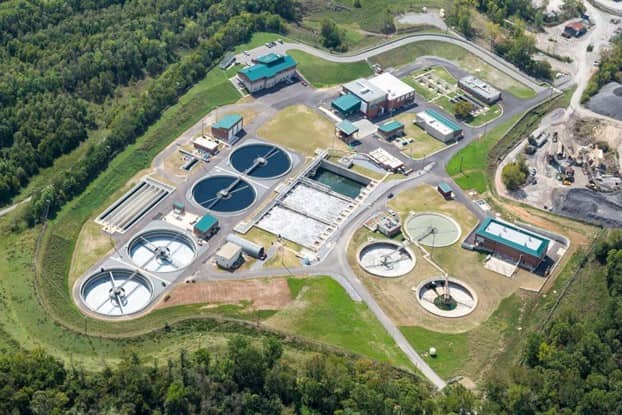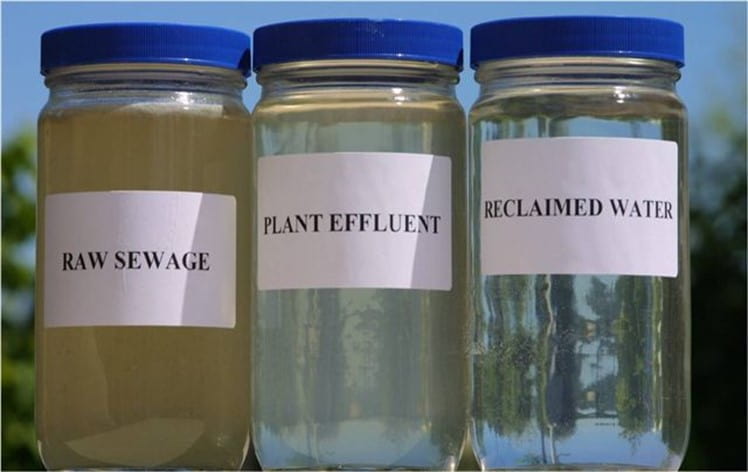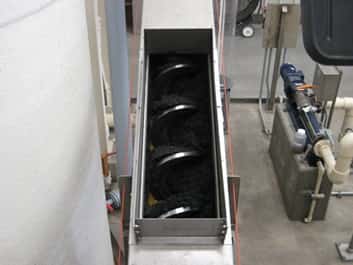
Number 2, everybody does it. Millions worldwide flush their toilets daily, sending their business off to a great unknown. Have you ever wondered what happens when you flush your toilet? Furthermore, what does a wastewater treatment plant really do?
More than likely, your flushed waste goes through miles of underground sewer pipes. After that, it then ends up at the local Wastewater Treatment Plant (see Figure 1). Nearly every town and city has a wastewater treatment plant. It is a facility that takes the sewage from local residents and removes unwanted contaminants so the water can be returned to the water cycle.

What happens once the water gets there? Well, here is where it gets interesting. Wastewater that enters the water treatment system goes through a multiple-step process and ends up as… FRESH WATER. That’s right. The water you drank this morning will eventually return to the environment so that you can drink it again. Sounds pretty gross, right? Well, it’s actually quite amazing!
For those that grew up in a rural setting, you are probably familiar with a “septic tank.” Even in modern America many homes still utilize septic tanks to process waste. Septic tanks are basically “clarifiers;” devices that store wastewater to allow contaminants to settle out of the water. This part of the process is relatively the same in the modern wastewater treatment plant.
Water collected from homes and businesses is first passed through large screens and grinders, which separate debris (you’d be amazed what ends up in a sewer, check out this great article by the East Idaho News) and chop up large organic particles (yes I mean what you think I mean) into smaller pieces so they process more efficiently.
The screened and chopped dirty water is sent to a large tank, called a primary clarifier (For more info, take a look at this blog and this video). A clarifier holds hundreds of thousands of gallons and is slowly stirred with giant paddles (skimmers and rakes). In the clarifier, like in a septic tank, the “solids” settle to the bottom and form sludge, while grease and oils rise to the top, leaving relatively clean water in between. The oils and greases are drawn off the top (by the skimmers) and the sludge is drawn off the bottom (by the rakes). These materials will be processed separately (we’ll discuss that later).
In a septic tank, the leftover water overflows out of the tank and is distributed into the “leech field,” a series of pipes in your yard that distributes the water into the ground. The location of these pipes is easily identified by the super green grass located right above them, thanks to the nutrient-rich water. While good for the grass, these nutrients are harmful to bodies of water because they cause excessive plant growth and algae blooms, which can kill natural grasses and marine life. To prevent this, the clarified water is further processed before release.
Bacteria play a vital role in your septic tank and industrial wastewater processing. In an industrial processing plant, clarified water is typically sent to an aeration tank. The aeration tank churns up the water to make it absorb oxygen. Furthermore, the oxygen supports the growth of bacteria that feed on, you guessed it, poop.
In the aeration tanks, an army of tiny microorganisms (it’s ok to call them bugs, we all do) feast on the remaining organic contaminants. The “bugs” convert unwanted nutrients (like nitrogen) into energy. This process releases gasses, such as carbon dioxide, nitrous oxide, methane, and hydrogen sulfide that are monitored and controlled.
Once the bacteria have done their work, the water is sent to secondary clarifiers, where dead bacteria and leftover contaminants will settle out. In the secondary clarifier, the effluent water will pass on to a system of filters, and the sludge will be sent to digesters, where the bacteria will be broken down and produce biogas.
Many modern plants capture these gasses (specifically methane) for use in plant processes (like generating electricity).
Finally, the water will be sent to a final treatment system. The treatment system injects chemicals to adjust the pH and passes the water through filters to remove tiny contaminants (including bacteria and metals). Depending on the plant type and technology water may be passed through an Ultra-Violet (UV) filter. The UV filter blasts the water with UV light, sanitizing it of nearly any living bacteria or virus known to modern science. Plants that do not have UV filters available (the technology is relatively new) will treat the water with a chemical disinfectant prior to discharge.
By this point, the water looks (and technically is) clean enough to drink (. However, the Clean Water Act places very specific requirements on the water before it can be released into the rivers and lakes we love.

Now that we’ve discovered what happens to the water, what about the “solids” we removed in the early part of this process? As described in this article, the sludge is treated through a separate multistage process. The process forms biosolids, which are essentially fertilizer. Human biosolids ( are used in land reclamation (like replanting forests), agriculture, and even as a soil filler.

Safely collecting, processing, and releasing human wastewater requires skilled and well-trained operators. Each government (local, state, and federal) has certification and continued education requirements for wastewater operations. Many states have online training resources and practice exams for those who want to become qualified operators. The State of Maryland has an extensive list of resources available on its website.